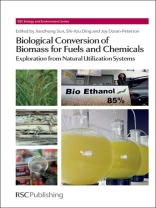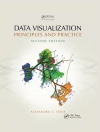This book is divided into two parts. The first covers biomass modification to facilitate the industrial degradation processing and other characteristics of feedstocks. These include reduction in the general recalcitrance of plant cell wall and downstream processing costs. The second focuses on cutting edge technologies for the conversion of lignocelluloses into biofuels and other products. It describes the most up-to-date advances in natural biomass utilization systems, such as wood-feeding termites and animals that efficiently degrade lignocellulosic substrates. Consolidated bioprocessing (CBP) integrates cellulase production and cellulose hydrolysis, with pentose and hexose fermentation in a single step. This replicates what happens in the digestive systems of animals, such as termites and cows, that effectively degrade lignocellulosic substrates. CBP has the potential to reduce production costs and lower capital investment whilst increasing conversion efficiency. Currently, there are no CBP-enabling micro-organisms suitable for industrial applications. Consequently, this book presents technologies which integrate the lignocellulolytic systems of insects and other animals to advance CBP strategy for cellulosic biofuels. It covers the progress made, and challenges faced, with the utilisation of gene, catalyst, and other unique mechanisms from cellulose-eating animals, as well as cutting-edge technologies developed to reduce the general recalcitrance of feedstocks for processing. This volume makes essential reading for academics and industrial groups concerned with overcoming the challenges inherent in the biological conversion of biomass into fuels and chemicals.
Содержание
Chapter 1. Introduction;
Part I: Biomass modification to reduce the recalcitrance of lignocellulose in processing;
Chapter 2. Overview of lignocellulose: structure and chemistry;
Chapter 3. Advances in the measurement/characterization of biomass structure;
Chapter 4. Lignin modification to reduce the recalcitrance of biomass processing ;
Chapter 5. Advances in genetic manipulations of plants for production of hydrolysis enzymes used in lignocellulosic bioethanol process;
Chapter 6. The diversity of lignocellulosic biomass resources and their evaluations for biofuels and chemicals ;
Part II: Biological conversion of biomass from the integration of natural biomass utilization systems;
Chapter 7. Technologies to study plant biomass fermentation using the model bacterium Clostridium phytofermentans;
Chapter 8. Lignocellulose degradation in termite symbiotic systems;
Chapter 9. The functional gene resources from cellulose-feeding insects for novel catalysts;
Chapter 10. Biological pre-treatment of biomass by wood-feeding termites;
Chapter 11. Lignocellulolytic systems of wood-feeding insects and their potential for viable biofuels ;
Chapter 12. Lignocellulolytic wood-feeding Cockroach — a forgotten treasure ;
Chapter 13. Reversal design of natural biocatalyst systems for biomass conversion ;
Chapter 14. The ruminant animal as a natural biomass conversion platform and a source of bioconversion agents;
Chapter 15. Tipula abdominalis, an aquatic insect, provides microorganisms and enzymes with applications to the biofuels industry;
Chapter 16. Cloning, Mutation and Over-expression of Lignocellulase Genes ;
Chapter 17. Cellulose-dissolving systems and their effects on enzymatic hydrolysis;
Chapter 18. What we can learn from the natural biomass utilization systems for developing the novel bioreactors;
Chapter 19: Techno-economic Analysis and Life Cycle Assessment of Lignocellulosic Biomass to Sugars using Various Pretreatment Technologies
Об авторе
Dr Jianzhong Sun is a distinguished professor of entomology and bioenergy and is Director of the Biofuels Institute at Jiangsu University in China. He is also Adjunct Professor in the Department of Biological Systems Engineering at Washington State University in the USA. Dr Sun’s research focuses mainly on the utilization of wood-feeding termites/other cellulolytic insects to develop the novel technologies for lignocellulosic biofuels and other bio-products. He initiated and chaired the first symposium on Lignocellulose Degradation by Insects and their Gut Symbionts with Potential Applications to the Biofuels Industry held at the 2008 annual conference of the Entomological Society of America in the USA. Dr Sun also edited a special issue entitled Insects and Biofuels for the Insect Science Journal in June 2010. To date, Dr Sun has published over 60 scientific papers, 4 book chapters, and a journal special issue on a variety of topics including biomass utilization, entomology, microbiology and biofuels. Dr Shi-You Ding is a plant biologist and biochemist specializing in the ultrastructure of plant cell walls and cell-wall-degrading enzymes. He has pioneered nanometer-scale studies of plant cell wall structures and the changes occurring in them during biomass conversion processes. Dr Ding currently leads several projects funded by the US Department of Energy. These are aimed at developing a deeper understanding of plant cell wall structure and processing of plant cell wall material to biofuels and bio-products. Dr Ding also has extensive experience in the biochemistry of cellulase systems including cellulosomes and fungal cellulases, as well as natural cellulolytic microbial communities. Based on the insights gained from micro- and nanoscale structure studies, he and his colleagues use molecular engineering approaches to build new chimeric enzyme proteins and to formulate mixtures of cellulases that work more efficiently to deconstruct cell-wall material and harvest its component chemicals for conversion to biofuels. Dr Ding has authored or co-authored more than 60 peer-reviewed papers and holds six US patents on thermophilic cellulases that have been licensed to industry. Dr Joy Doran-Peterson is Associate Professor of Microbiology at the University of Georgia in the USA. She is a microbiologist and bioengineering scientist. Her main research activities focus on biofuels, metabolic pathway engineering, fermentation, characterization of environmental microorganisms, and microbial ecology. Dr Peterson has published more than 30 professional papers, including book chapters, on cellulosic biofuels and the discovery of novel microbes for SSF and CBP strategies. Dr. Peterson has also pioneered cutting-edge technologies to isolate novel bacterial symbionts from cellulose-feeding insects and their application in industrial biorefinery systems for the production of lignocellulosic ethanol.












